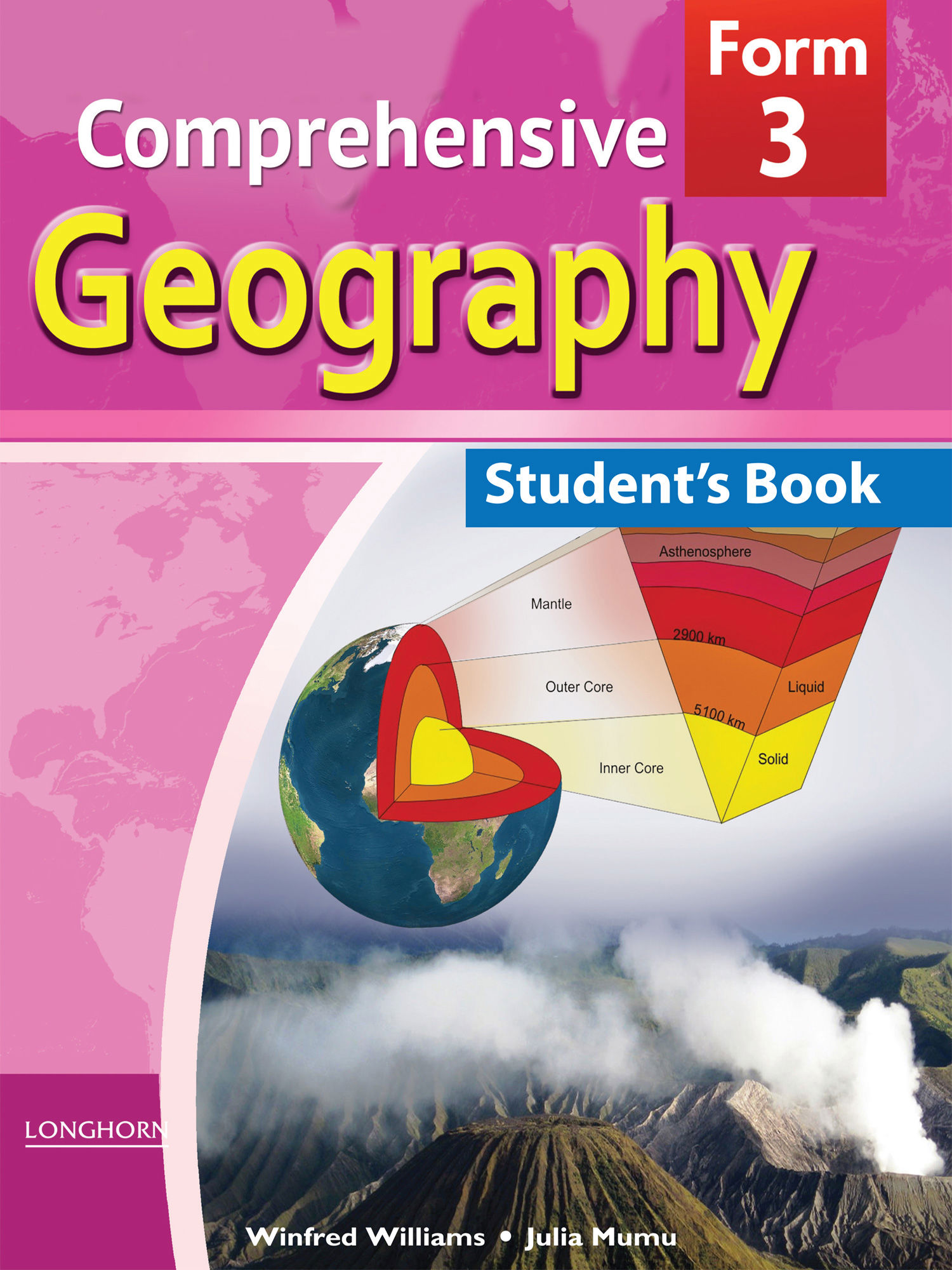
Authors
Kambua Williams, Julia MumuExercises kit’s authors
Kambua Williams, Julia MumuPublisher
Included in packages

-
The study kit contains 158 chapters and 46 exercises of which 27 are in the chapters and 19 in the task exercises.
-
Authors
Kambua Williams, Julia Mumu -
Exercises kit’s authors
Kambua Williams, Julia Mumu -
Subject
Geography -
Grade
Form 3 -
Kit's language
English -
Publisher
Longhorn Publishers -
Included in packages
The Comprehensive Geography Student's Book covers the Form Three Geography syllabus requirements comprehensively and systematically.
The book:
• Uses simple known-to-unknown approach to teach issues and concepts • Analyses vividly all Geography topics for Form Three;
• Provides adequate illustrations in form of drawings and photographs;
• Tackle's throughly the new Geography syllabus introduced in 2003;
• Teaches geographical skills using a practical approach
This book is an indispensable companion for students who aim at excelling in Geography.
The authors, Winfred Williams and Julia Mumu, have been teachers and examiners of Geography at secondary school level for many years. Winfred Williams is a Geography teacher at Alliance Boys High School and Julia Mumu is the head of Humanities Department at Mukaa High School.
1. Statistical Methods
Lead |
Chapter |
|---|---|
| 1.1. |
Compound or cumulative bar graphs
Free chapter! |
| 1.2. | Divided circles. Proportional circles |
| 1.3. | Simple pie charts |
| 1.4. | Revision Questions |
2. Map Work
Lead |
Chapter |
|---|---|
| 2.1. | Interpretation of physical features and human activities on topographical maps |
| 2.2. | Landforms |
| 2.3. | Vegetation and Drainage |
| 2.4. | Economic activities |
| 2.5. | Settlement |
| 2.6. | Location and functions of urban areas |
| 2.7. | Enlargement and reduction of maps |
| 2.8. | Drawing of cross-sections |
3. External Land Forming Processes
4. Soils
Lead |
Chapter |
|---|---|
| 4.1. | Soils |
| 4.2. | Soil forming processes |
| 4.3. | Factors that influence soil formation |
| 4.4. | Properties and characteristics of soil |
| 4.5. | Soil properties |
| 4.6. | Soil profile and catena |
| 4.7. | Soil degeneration |
| 4.8. | Soil erosion |
| 4.9. | Classification of soils |
| 4.10. | Intrazonal and azonal order |
| 4.11. | Significance of soils |
| 4.12. | Management and conservation of soil |
| 4.13. | Revisions Questions |
5. Agriculture
6. Revision Questions
Lead |
Chapter |
|---|---|
| 6.1. | Test Paper 1(312/1A) |
| 6.2. | Test Paper (312/B) 2¾ Hrs |
| 6.3. | Test Paper (312/2) |
| 6.4. | Test Paper (312/2) 2¾ Hrs |
7. K.C.S.E Model Test Papers – Answers
Lead |
Chapter |
|---|---|
| 7.1. | Test paper (312/1) Answers |
| 7.2. | Test Paper (312/1B) Answers |
| 7.3. | Test Paper (312/2) Answers |
| 7.4. | Test Paper (312/2) Answers |
8. Extras
Lead |
Chapter |
|---|---|
| 8.1. | Definitions |
